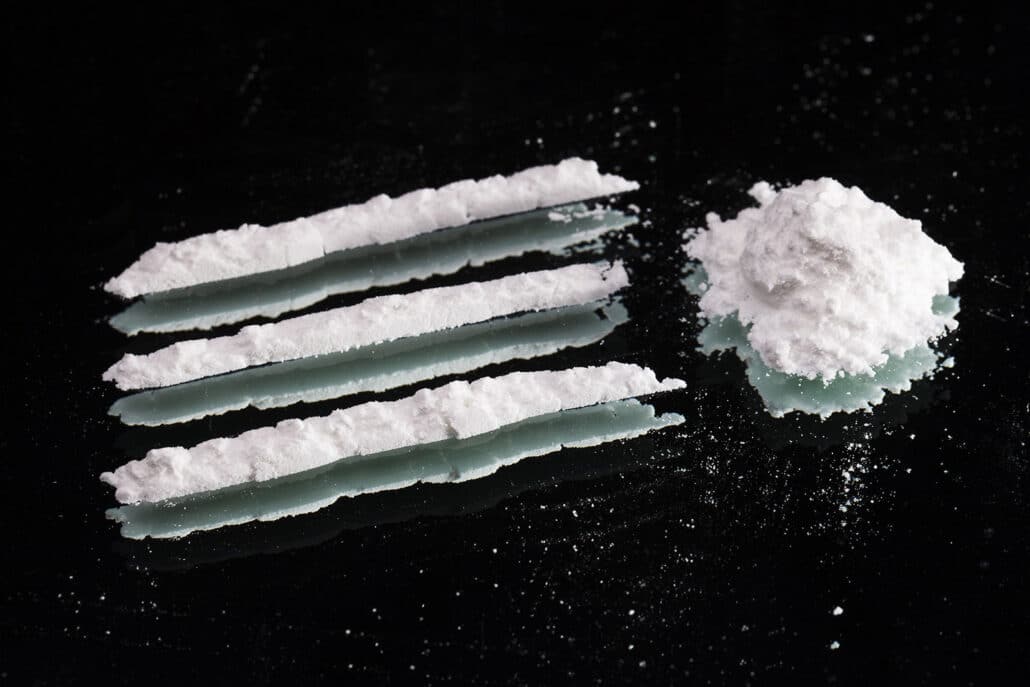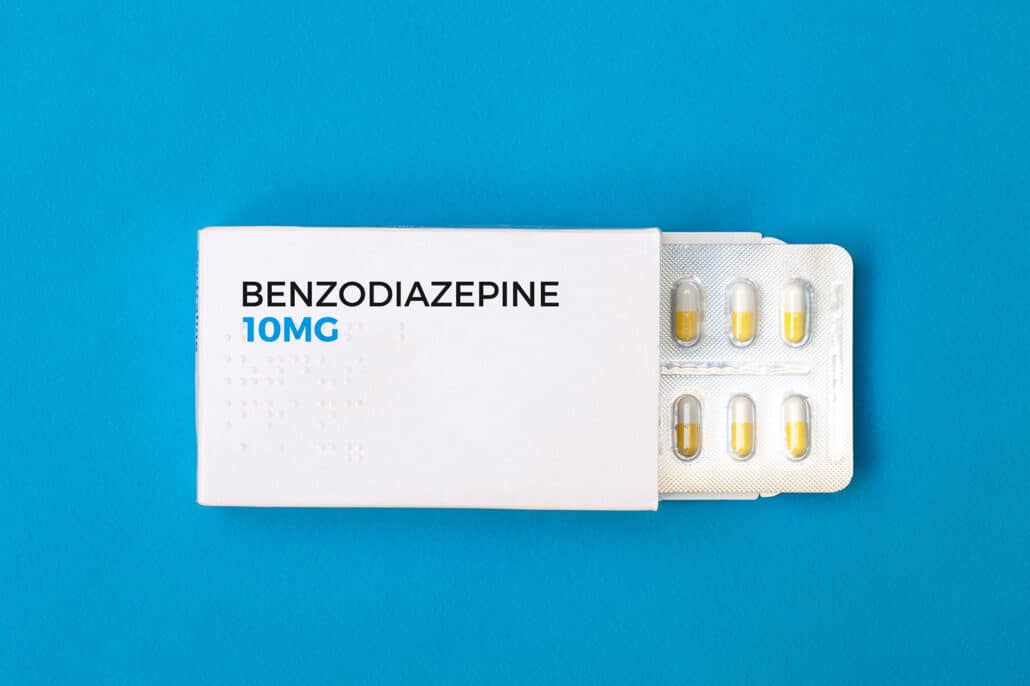The Centers for Disease Control and Prevention (CDC) has reported a continued decline in opioid overdose in recent years. Recent data found a considerable 24% decline in opioid overdose in 2024, down to 87,000 from 110,000 reported deaths.
And while that’s great news, the threat of substance use disorders (SUD) remains as pressing as ever. Cocaine, for one, has a staggering number of illicit users of 50 million and is considered one of the most commonly abused drugs in the US, per the National Institute of Health (NIH).
That’s one in four Americans reporting having used cocaine once. Over 6 million people also admitted to using the stimulant drug regularly for its euphoric effects.

But can you overdose on coke? What are the signs and risks of a cocaine overdose? How can you prevent yourself or your loved ones from falling into the grip of cocaine addiction and risking overdosing?
Here’s everything you should know.
Table of Contents
Can You Overdose on Cocaine?
Yes, you can overdose from taking large amounts of cocaine, also referred to medically as cocaine toxicity. Many also use the stimulant alongside other substances, resulting in an increased risk of fatal overdose.
Fentanyl, a highly potent synthetic substance and one of the leading causes of drug fatality in the US, is frequently mixed with cocaine to enhance its euphoric effects. Others take cocaine with alcohol, believing that blending the two helps prevent withdrawal symptoms.
But that’s not true.
Mixing cocaine with other highly potent opioids like fentanyl can double its lethality. That’s because fentanyl is a hundred times stronger than morphine, so incredibly powerful that a small dose can be deadly.
On the other hand, cocaine use with alcohol encourages the production of toxic metabolites called cocaethylene. It affects the heart, liver, and other bodily organs, increasing the risk of heart attack, liver damage, and sudden stroke, among others.
Cocaine Overdose Statistics
Overdosing refers to the critical state when someone ingests excessive amounts of a substance or a blend of substances. This condition is treated as a medical emergency and, in many instances, can be life-threatening.
The National Institute on Drug Abuse (NIDA) has reported a steady growth of cocaine-related overdoses throughout the years. Between 2015 and 2019, the country witnessed a considerable rise in cocaine overdose deaths, from 6,784 to 15,883.
By 2022, the incidence of cocaine deaths peaked higher at 27,569 reported cases—an astonishing 73% increase from 2019. Britain has been seeing a similar epidemic in recent years, with over 5,000 reports of drug poisoning, mainly of cocaine abuse, in 2023.
Understanding Cocaine Addiction
But what makes cocaine incredibly addictive?
Cocaine, colloquially referred to as coke, crack, and snow, is an addictive stimulant made from coca plant leaves (Erythroxylum coca), a tropical shrub that grows abundantly in the Northern and Western parts of South America.

The substance comes in many forms but usually appears as a white powder and is often administered recreationally by snorting, smoking, and injecting.
Labeled as a schedule II, cocaine is addictive because it reacts with the body’s central nervous system. When ingested, it sends high amounts of dopamine, a feel-good hormone and neurotransmitter, into the regions of the brain regulating pleasure.
As the influx of dopamine floods the brain, feelings of intense energy and alertness follow. These effects are almost immediate and can last from several minutes to an hour. A cocaine user may also experience other sensations, such as:
- An overjoyed state
- Restlessness
- Overconfidence
- Urge to talk more
- Lowered need for sleep
- Decreased appetite
- Increased sex drive
- Sensitivity to stimulus (touch, sight, etc.)
When someone is high on cocaine, they may start doing things they wouldn’t normally do. Some become incredibly impulsive, spending extravagantly or indulging in unsafe sexual encounters.
They also exhibit “high” symptoms like dilated pupils, high body temperature, elevated heart rate, and abnormally high blood pressure.
That said, as the drug begins to subside, the individual may experience unpleasant symptoms called the “comedown.” Users may experience the following side effects as cocaine diminishes from their system:
- Fatigue
- Body pains
- Confusion
- Irritability
- Sudden intense sweating
- Headache
- A runny nose
- Mental health concerns (anxiety, depression, etc.)
The effects of cocaine go beyond these short-term physical symptoms. Animal research indicates that frequent and long-term use of cocaine can lead to damage in some areas of the brain. This can result in poor cognitive skills and impaired self-awareness.

What Happens When You Overdose on Cocaine?
An overdose happens from overloading the body with a substance beyond the recommended amount or individual tolerance levels. When someone reaches this critical state, important systems of their body will begin to malfunction.
A crack cocaine overdose affects the entire body. When the opioid takes over, the person’s veins can collapse, flooded with the substance. This can suppress normal blood flow, reducing the oxygen that reaches your vital organs.
The cardiovascular system is one of the first that takes a massive hit in an overdose. As the opioid interferes with the brain and heart receptors, the heart rate slows down and sometimes even stops entirely.
Cocaine is particularly dangerous because it burdens the individual’s heart. Seizures, cardiac arrest, arrhythmia, and strokes have all been reported among people with cocaine addiction.
Respiratory Depression is another common consequence of drug toxicity. This is when the person starts breathing incredibly slow, hampering oxygen in the lungs. Low oxygen levels can result in dangerous carbon dioxide buildup in the body.
Apart from the heart and lungs, the brain is the most critical organ that gets harmed by overdose—accidental or intentional. Many times, overdosed patients experience damage to the brain from the lack of oxygen. Permanent paralysis and speaking issues may follow as a result.
Symptoms of a Cocaine Overdose
Physicians categorize overdose as mild, moderate, or severe. Often, the symptoms can vary depending on its severity. Your age, size, weight, and overall health are all risk factors that dictate how your body reacts to the drug.

That said, regardless of its intensity, recognizing the signs of a cocaine overdose promptly can make the difference between life or death. If you spot the following symptoms, get ready to act immediately.
- Chest pains
- Abdomen pain
- Panic, agitation, and aggression
- Paranoia and confusion
- Rapid breathing
- Abnormal heart rhythm
- Twitching or convulsions
- Body temperature spikes
- Nausea and vomiting
- Sudden and unprovoked shifts in mood
Some symptoms may indicate a more fatal situation that requires immediate medical attention. These signs can indicate a higher risk of overdose fatality:
- Extreme drowsiness
- Slow, rapid, or no heartbeat
- Difficult or shallow breathing
- A coma-like state
- Complete lack of strength
- Purpling or bluing skin color
- Inability to keep down fluids
What You Can Do as a First Responder
If you observe anyone showing any signs of cocaine overdose, remain calm and call the local emergency services immediately. Contact 911 or other overdose helplines and wait for the medical professionals without leaving the patient.
Treatment For Cocaine Overdose
Prompt medical attention is crucial to treating cocaine overdose and preventing fatality. Healthcare providers generally focus on managing the symptoms and curbing life-threatening complications.
In severe cases, medicine will be administered to ameliorate risky symptoms. Benzodiazepine is usually given to high-risk patients exhibiting signs like high heart rate, high blood pressure, and seizures.

Lowering body temperature is another vital step in managing cocaine overdose, alleviating dehydration, dizziness, nausea, and vomiting. Medical experts can do this by covering the patient’s body with cooling blankets and ice packs.
Critical condition patients experiencing respiratory failure will be provided with ventilation support. Moreover, IV fluids are given to aid and protect the liver from the toxins and prevent organ damage.
Cocaine Addiction Treatment Options
Of course, drug toxicity is merely a consequence of drug addiction. To eliminate the risk of another overdose, getting the right help and receiving appropriate intervention is the first step. Cocaine treatment programs will usually involve:
- Detoxification: Detox programs help patients suffering from SUD manage withdrawal symptoms safely as the substance leaves their system.
- Talk Therapy: A form of psychotherapy addressing the emotional, behavioral, and mental health concerns of SUD patients. Cognitive-behavioral therapy is an example of talk therapy provided by treatment centers.
- Support Groups: Support groups aid SUD recovery by allowing patients to meet people with the same disorder. This way, they can share their stories and learn valuable coping skills, all in a safe environment.
Final Thoughts: Overcoming Substance Abuse With Expert Help
Battling cocaine addiction can feel overwhelming and potentially dangerous alone. But while seeking help can feel terrifying, it’s the most crucial step you can take to break free from the vicious cycle.
Long Island Interventions offers personalized treatment for your unique situation. With comprehensive inpatient/outpatient treatment programs, state-of-the-art facilities, and humane SUD specialists, we’ll help you get back on track and recover your life.
Reach out to Long Island Interventions and start your journey today!
References
- https://www.cdc.gov/media/releases/2025/2025-cdc-reports-decline-in-us-drug-overdose-deaths.html
- https://pubmed.ncbi.nlm.nih.gov/8473543/
- https://www.healthdirect.gov.au/addiction-withdrawal
- https://academic.oup.com/jat/article-abstract/43/3/155/5363995?redirectedFrom=fulltext
- https://nida.nih.gov/research-topics/trends-statistics/overdose-death-rates#Fig8
- https://www.bbc.com/news/articles/cy5l4nknew0o
- https://www.nimh.nih.gov/health/topics/substance-use-and-mental-health
Published on: 2025-04-26
Updated on: 2025-05-15

